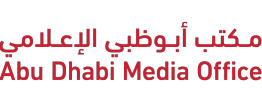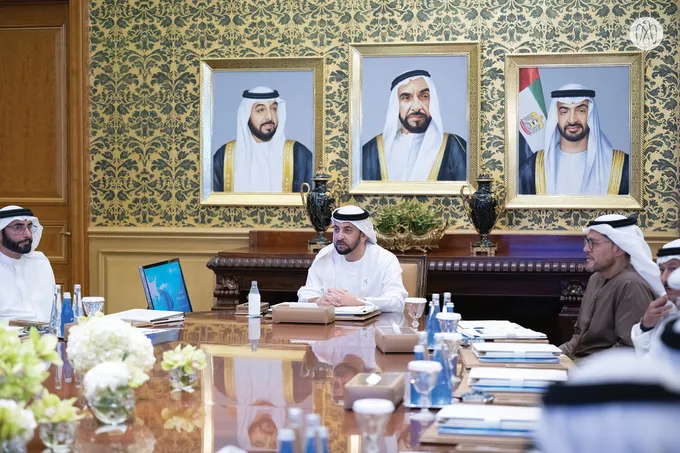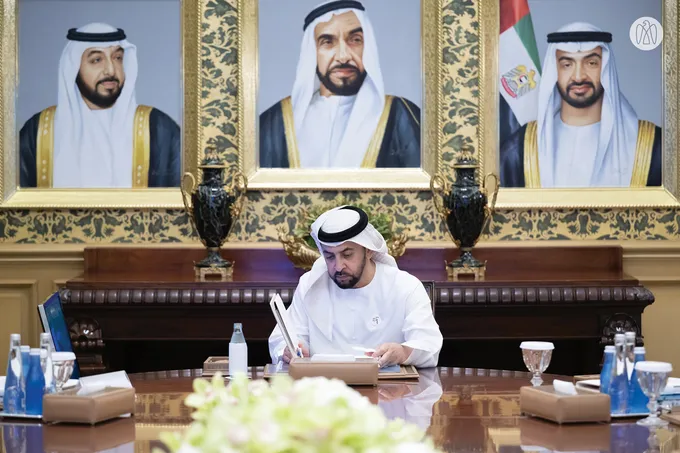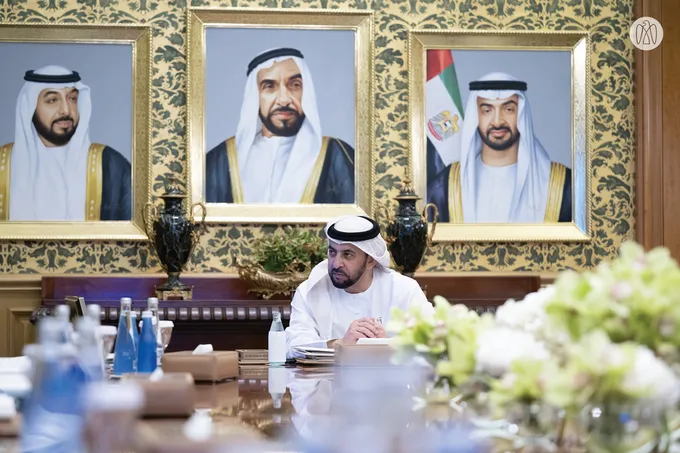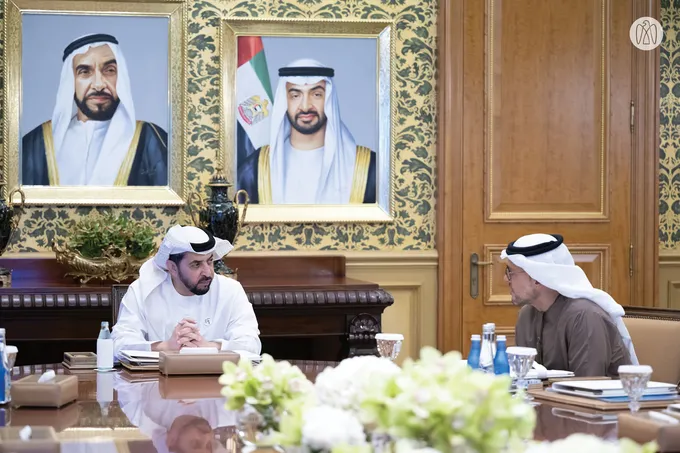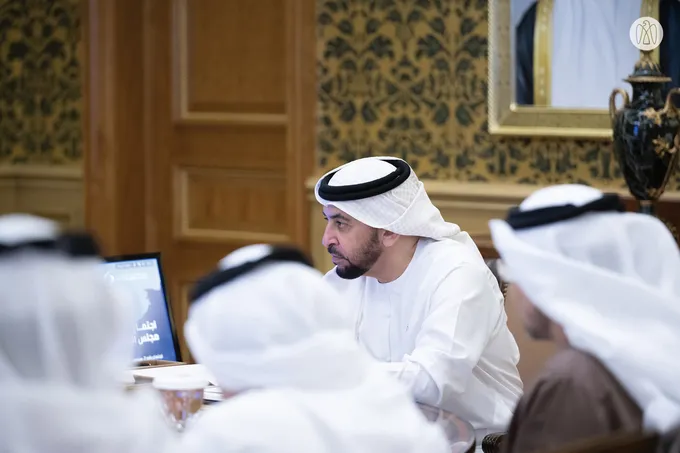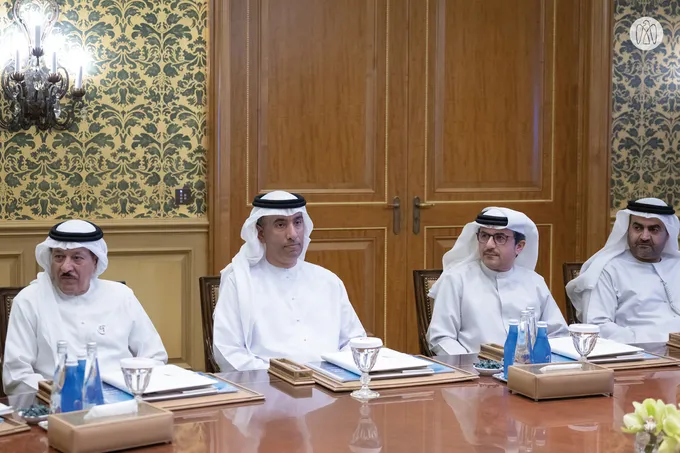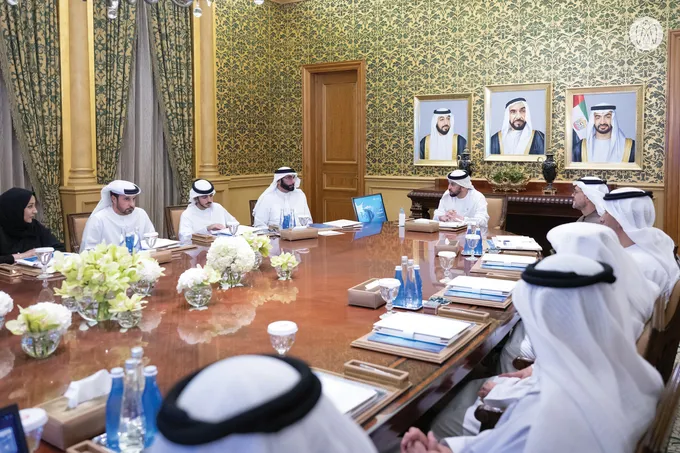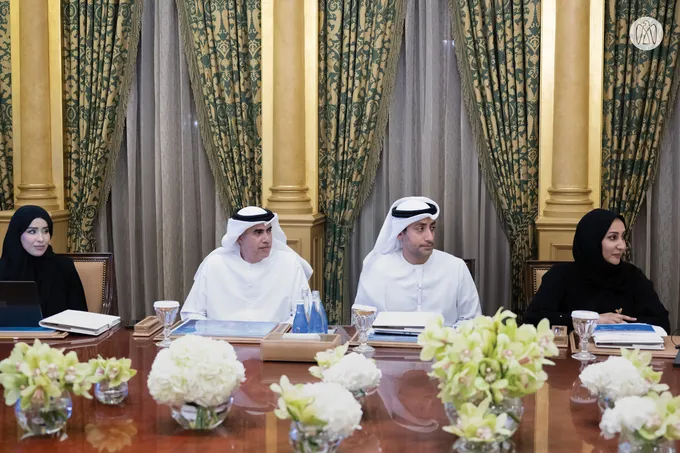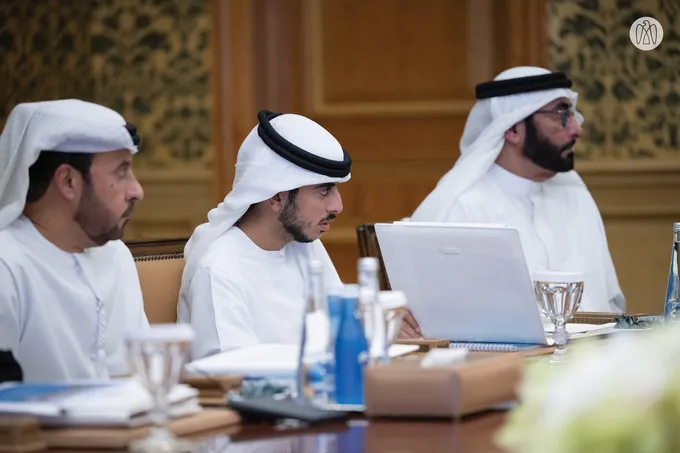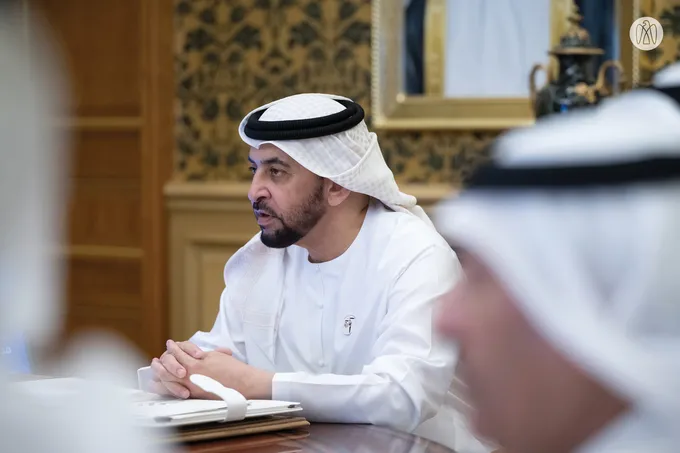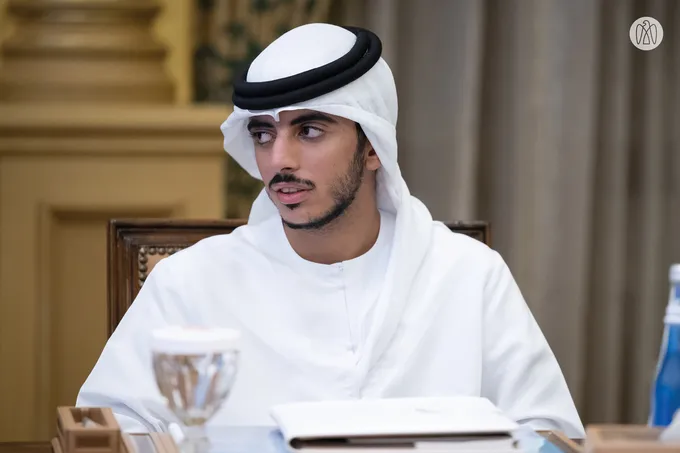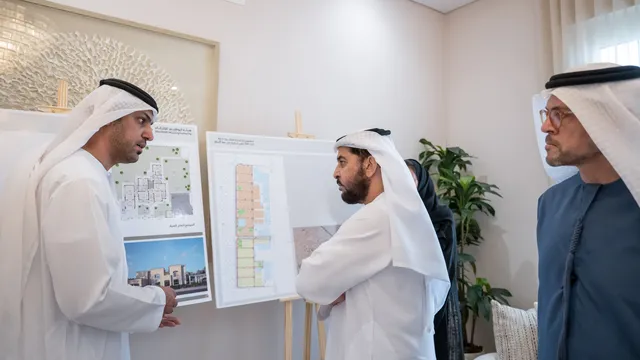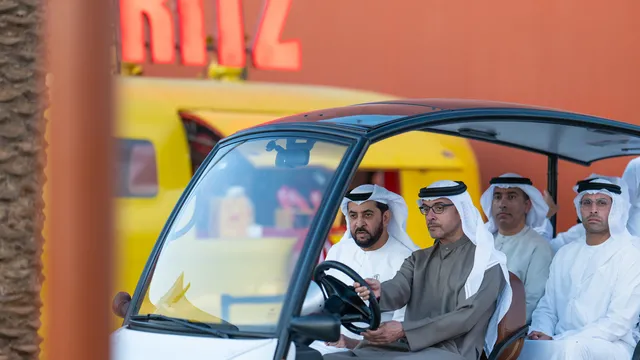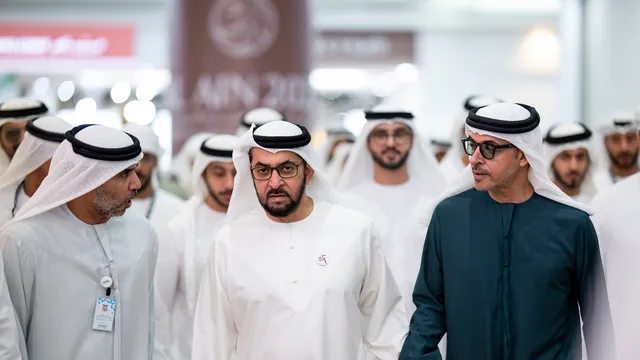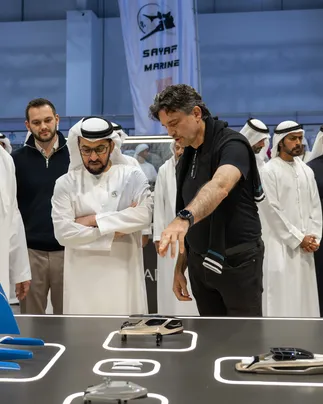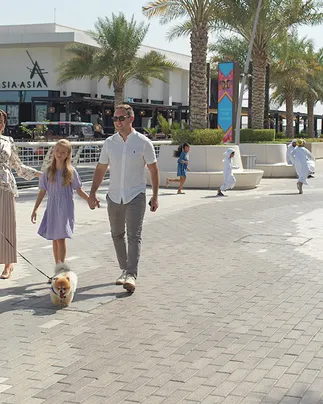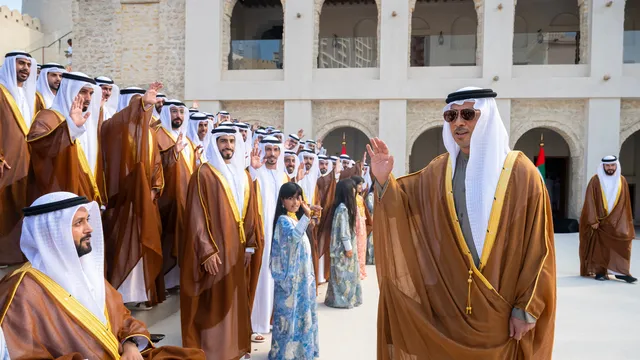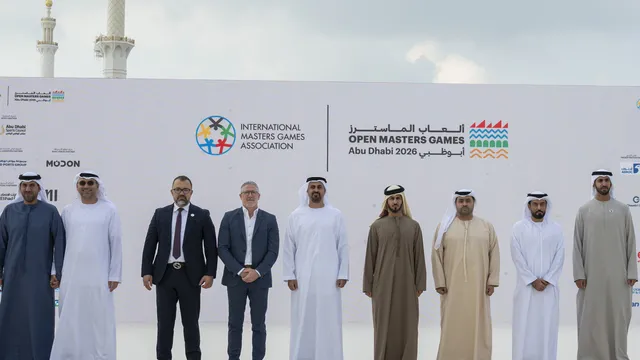His Highness Sheikh Hamdan bin Zayed Al Nahyan, Ruler’s Representative in Al Dhafra Region and Chairman of the Board of Directors of the Environment Agency – Abu Dhabi (EAD), has chaired the second Board of Directors’ meeting of 2025.
His Highness praised EAD’s role in establishing environmental values within the pillars of health, economy and society in the emirate, stressing its position in preserving the environment and enhancing its vision of preserving Abu Dhabi’s environmental prosperity for future generations.
His Highness praised the steps undertaken by EAD earlier this year in preparation for the UAE’s hosting of the International Union for the Conservation of Nature (IUCN) World Conservation Congress Abu Dhabi, held under the patronage of His Highness the President of the UAE, with the support of the Ministry of Climate Change and Environment (MOCCAE) and organised by IUCN for the first time in the Gulf region. The UAE won the bid to host the congress via a bid submitted by MOCCAE and the Environment Agency – Abu Dhabi (EAD), on behalf of the Government of the United Arab Emirates. The congress, which includes 500 specialised sessions, will attract approximately 10,000 participants and visitors from more than 140 countries in October of this year.
The convening of this congress in Abu Dhabi embodies the unwavering support His Highness Sheikh Mohamed bin Zayed Al Nahyan, President of the UAE, gives to environmental and climate action, and reinforces the wise leadership's approach to protecting natural resources and conserving biodiversity, as a fundamental pillar for achieving sustainable development.
The meeting, held at Al Nakheel Palace, was attended by Sheikh Rashid bin Hamdan bin Zayed Al Nahyan; His Excellency Mohammed Ahmed Al Bowardi, Vice Chairman of the Board of Directors of EAD; His Excellency Mohamed Ali Al Shorafa, Chairman of the Department of Municipalities and Transport – Abu Dhabi; His Excellency Major General Ahmed Saif Bin Zaitoon Al Muhairi, Commander-in-Chief of Abu Dhabi Police; His Excellency Musabih Al Kaabi, CEO of the Low Carbon Solutions and International Growth Department at ADNOC; His Excellency Nasser Mohammed Al Mansouri, Under-Secretary of the Ruler’s Representative Court in Al Dhafra Region, His Excellency Issa Hamad Boushehab, Advisor to the Ruler's Representative in Al Dhafra Region and Her Excellency Dr Shaikha Salem Al Dhaheri, Secretary General of EAD.
The agency presented to His Highness updates on EAD Strategy 2026-2030, which aims to support the future of Abu Dhabi emirate by focusing on a set of key pillars, including facing climate change and enhancing the efficient use of natural resources. This strategy seeks to ensure the continued prosperity of the local environment and enhance its readiness to address future challenges, contributing to strengthening Abu Dhabi's international standing as a leading destination for environmental action.
His Highness was briefed on the latest developments and efforts made by the agency, including the distinguished results achieved by the aquaculture project in Dalma, which employs artificial intelligence technologies for the first time in the region. The project has succeeded in producing four types of local fish: Safi Arabi, Qabit, Shaari and Shaam, with a capacity of up to 100 tonnes of fish.
His Highness was also briefed on the developments of the Abu Dhabi Coral Gardens initiative, where more than 5,000 artificial reef modules have been installed to date. The target is 40,000 artificial reef modules by the end of 2030, and more than 3,000 natural corals have been installed on the artificial reef modules to enhance marine biodiversity, as well as mechanisms for preserving geological formations (Al Brooq). Field surveys have documented 924 geological formations at Al Brooq, helping to preserve this natural heritage in Abu Dhabi emirate.
The agency also reviewed the modelling system to predict air quality. Using advanced algorithms and the accurate simulation of sandstorms, the system can predict levels of air pollution, especially transboundary pollutants, approximately 72 hours in advance. In addition to a project to monitor unauthorised waste disposal sites in Al Ain Region, which identified 150 unauthorised waste disposal locations used to dump various waste types using artificial intelligence and satellite images, EAD is committed to achieving its strategic goal of reducing unauthorised waste disposal incidents by 90 per cent across the emirate by 2041.
